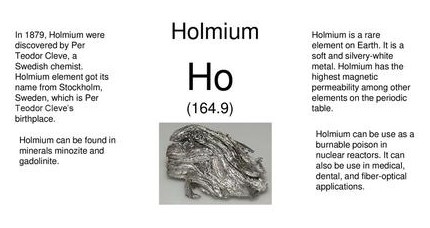Beryllium and magnesium are two elements that share a column on the periodic table, known for their distinctive characteristics and widespread applications. Both metals are remarkably light and possess unique chemical and physical properties that set them apart from other elements. While they might appear similar at first glance, their differences are significant and influence their use in various industries.
Beryllium and magnesium differ primarily in their atomic structure, physical properties, and reactivity. Beryllium, with an atomic number of 4, is a hard, gray metal known for its stiffness and high melting point. Magnesium, on the other hand, is lighter with an atomic number of 12, known for its excellent machinability and ability to form alloys with other metals. These differences make beryllium ideal for aerospace and defense applications, while magnesium is widely used in the automotive and electronics industries.
The distinction between beryllium and magnesium extends beyond their applications. Beryllium’s toxicity requires careful handling and has led to its limited use in consumer products. Conversely, magnesium’s role in human health as an essential dietary mineral showcases its safety for use in a broader range of products, including health supplements. This contrast highlights the importance of understanding each element’s unique properties and safety considerations when choosing materials for specific applications.

Elemental Basics
Beryllium Overview
Atomic Structure
Beryllium stands out in the periodic table with its atomic number of 4, placing it in group 2, among the alkaline earth metals. This lightweight element has a unique atomic structure, characterized by a small atomic radius and a relatively high ionization energy. Beryllium’s nucleus contains four protons and usually five neutrons, with a standard atomic weight of about 9.012 u. The electron configuration of beryllium is 1�22�21s22s2, which reveals its two electrons in the outer shell, making it relatively stable yet capable of forming bonds by donating these two valence electrons.
Physical Properties
Beryllium’s physical properties are remarkable. It’s a hard, gray metal, known for its light weight and high melting point (about 1287°C). Its density is quite low, at approximately 1.85 g/cm³, making it one of the lightest metals. Despite its brittleness at room temperature, beryllium’s stiffness and strength-to-weight ratio are exceptional, properties that are highly valued in specialized applications where lightweight materials are crucial.
Magnesium Overview
Atomic Structure
Magnesium, with an atomic number of 12, also falls within the alkaline earth metals category. Its atomic structure features a nucleus comprising 12 protons and typically 12 neutrons, leading to an atomic weight around 24.305 u. The electron configuration for magnesium is 1�22�22�63�21s22s22p63s2, indicating two electrons in its outermost shell. These electrons play a key role in magnesium’s chemical reactivity and its ability to form a wide range of compounds.
Physical Properties
Magnesium is known for its lightweight, with a density of just 1.74 g/cm³, slightly less than beryllium. It appears as a shiny, silver-white metal under standard conditions. Among its noteworthy physical characteristics are its low melting point (650°C) and boiling point (1090°C), which are significantly lower than those of beryllium. Magnesium’s excellent machinability and ability to form alloys with other metals are properties that enhance its utility in various industrial applications.
Key Differences
Atomic Characteristics
Atomic Number and Weight
The atomic number for beryllium is 4, and for magnesium, it is 12. This fundamental difference in atomic structure leads to varied physical and chemical properties. Beryllium’s atomic weight is about 9.012 u, while magnesium’s is more than double, at approximately 24.305 u.
Electron Configuration
Beryllium’s electron configuration is 1�22�21s22s2, indicating a full s-orbital at its outermost shell, which contributes to its stability. In contrast, magnesium’s configuration, 1�22�22�63�21s22s22p63s2, shows a similar full s-orbital at the higher energy level, explaining its propensity to donate electrons and form compounds.
Physical Properties
Color and State at Room Temperature
Beryllium is a hard, gray metal, whereas magnesium appears as a shiny, silver-white metal. Both are solid at room temperature, showcasing their metallic nature.
Melting and Boiling Points
Beryllium boasts a high melting point of 1287°C and a boiling point of 2469°C, reflective of its strong metallic bonds. Magnesium’s melting and boiling points are lower, at 650°C and 1090°C, respectively, which influences its processing and applications.
Chemical Behavior
Reactivity with Water
Beryllium does not react with water at normal temperatures, displaying its resistance to corrosion. Magnesium, however, reacts slowly with water at room temperature, forming magnesium hydroxide and hydrogen gas, especially when heated.
Role in Compounds
Beryllium forms compounds, primarily through covalent bonding, due to its small size and high ionization energy. Magnesium’s compounds are typically ionic, where it donates its two outer electrons to achieve stability.
Applications
Beryllium Uses
Aerospace and Defense
Beryllium’s lightweight and strong characteristics make it indispensable in aerospace for components that require high strength-to-weight ratios. Its application in defense spans missiles and satellite structures, where performance and reliability are paramount.
Electronics and Telecommunication
In electronics, beryllium is prized for its thermal stability and electrical conductivity. It’s used in connectors, switches, and relays. In telecommunication, beryllium copper alloys ensure reliable connections and durability.
Magnesium Uses
Alloy Production
Magnesium’s ability to form alloys with other metals enhances its use in automotive and aerospace industries. These alloys are lightweight, strong, and corrosion-resistant, making them ideal for improving fuel efficiency and reducing environmental impact.
Medical and Health Industry
Magnesium’s role in human health as an essential mineral is well-documented. It’s used in medical implants due to its biocompatibility and in health supplements to support muscle and nerve function.

Health and Safety
Beryllium Concerns
Toxicity and Handling Precautions
Beryllium’s toxicity is a significant concern in industrial settings. Inhalation of beryllium dust or fumes can lead to a serious condition known as chronic beryllium disease (CBD), affecting the lungs and causing shortness of breath, fatigue, and other severe respiratory issues. To mitigate these risks, workplaces must implement stringent handling precautions:
- Use of protective equipment (PPE) such as respirators and gloves
- Installation of ventilation systems to reduce airborne particles
- Regular training for workers on the dangers of beryllium exposure
Occupational Exposure Limits
Regulatory bodies have set occupational exposure limits (OELs) for beryllium to protect workers. In the United States, the Occupational Safety and Health Administration (OSHA) has established a permissible exposure limit (PEL) of 0.2 micrograms per cubic meter of air over an 8-hour workday. Monitoring air quality and conducting regular health screenings are essential measures to ensure compliance and safeguard workers’ health.
Magnesium Considerations
Dietary Importance
Magnesium plays a crucial role in human health, being involved in over 300 biochemical reactions in the body. It supports muscle and nerve function, energy production, and bone health. A lack of magnesium can lead to health issues such as muscle cramps, fatigue, and irregular heartbeats. Foods rich in magnesium include nuts, seeds, whole grains, and leafy green vegetables, and it’s often added to dietary supplements for its health benefits.
Flammability and Safety Measures
Despite its health benefits, magnesium’s flammability is a safety concern, especially in powdered or thin strip form, where it can ignite easily and burn intensely. Safety measures in handling magnesium include:
- Storing magnesium in a dry, cool place away from oxidizing agents
- Using dry sand to extinguish magnesium fires, as water can exacerbate the fire
- Training personnel in fire safety procedures specific to magnesium
Environmental Impact
Mining and Extraction
Environmental Footprint
The mining and extraction processes for beryllium and magnesium can have significant environmental impacts. These include land degradation, water pollution from runoff, and the release of greenhouse gases. However, advances in mining technologies and practices are aimed at minimizing these effects by:
- Implementing land reclamation projects
- Treating water before discharge
- Reducing energy consumption and increasing efficiency in extraction processes
Sustainability Practices
Sustainability in mining involves reducing the environmental footprint and promoting social responsibility. Practices include:
- Utilizing renewable energy sources for mining operations
- Engaging with local communities to address concerns and benefits
- Adopting recycling and material recovery to lessen the demand for new mining
Recycling and Disposal
Current Recycling Technologies
Recycling of beryllium and magnesium is an essential step toward sustainability. For magnesium, recycling from scrap metal and used products is well-established, involving melting and refining processes. Beryllium recycling is more complex due to its toxicity, but is crucial for reducing waste and conserving resources. Technologies focus on safe handling and reprocessing of beryllium-containing materials.
Challenges in Disposal
The disposal of beryllium and magnesium waste poses challenges, particularly with beryllium’s toxicity and magnesium’s flammability. Safe disposal practices are critical to avoid environmental contamination and health risks. For beryllium, this involves secure landfilling and specialized treatment facilities. For magnesium, preventing moisture contact and ensuring safe storage are key to avoiding fire hazards.
Future Perspectives
Technological Innovations
Advances in Usage and Applications
The future of beryllium and magnesium looks promising, with technological innovations opening new avenues for their use. For beryllium, advancements in material science are expanding its applications in telecommunications and aerospace, where its properties can be utilized in more environmentally friendly ways. For magnesium, innovations in alloy composition and manufacturing techniques are making it an even more attractive option for automotive and electronic applications, thanks to its lightweight and strong characteristics.
Market Trends
Demand and Supply Dynamics
The demand for both beryllium and magnesium is on the rise, driven by their critical roles in high-tech and sustainable applications. However, supply dynamics are influenced by geopolitical factors, mining conditions, and global economic trends. Ensuring a stable supply requires strategic resource management, investment in mining and recycling infrastructure, and international cooperation.
Impact of Global Industry Trends
Global industry trends, such as the shift towards green technologies and sustainable manufacturing, are influencing the markets for beryllium and magnesium. The automotive industry’s move towards electric vehicles (EVs) and the aerospace industry’s pursuit of lighter and stronger materials are particularly noteworthy. These trends are expected to drive innovation and demand for both elements, underscoring the need for continued research and development in their applications and environmental management strategies.
Frequently Asked Questions
What makes beryllium unique?
Beryllium’s uniqueness lies in its combination of lightness, high stiffness, and significant strength-to-weight ratio, which is unparalleled by most metals. This makes it exceptionally suitable for aerospace and defense applications where lightweight materials capable of withstanding high stress are crucial.
How is magnesium used in daily life?
Magnesium finds its way into daily life primarily through its use in alloys for lightweight automotive parts, electronic devices, and as an essential mineral in health supplements. Its lightweight and strong characteristics make it ideal for enhancing fuel efficiency in vehicles and portability in consumer electronics.
Can beryllium and magnesium be recycled?
Yes, both beryllium and magnesium can be recycled. Magnesium recycling is common in the automotive and electronics industries to reduce waste and production costs. Beryllium recycling is more complex due to its toxicity but is practiced in specialized industries to conserve resources and minimize environmental impact.
Why is beryllium considered hazardous?
Beryllium is considered hazardous due to its potential to cause chronic beryllium disease (CBD), a lung disorder caused by inhaling beryllium dust or fumes. Its use requires stringent safety protocols to protect workers from exposure.
Conclusion
The exploration of beryllium and magnesium reveals a fascinating contrast between two elements that are close neighbors on the periodic table. Their differences highlight the importance of material choice in various applications, from aerospace to personal electronics, and the significance of safety considerations in their use. As we continue to advance technologically, the roles of beryllium and magnesium in industry and health will undoubtedly evolve, underscoring the need for ongoing research and innovation.
Understanding beryllium and magnesium’s unique properties and applications not only enriches our knowledge of the material world but also informs safer and more efficient use of these remarkable elements. As we harness their potential, we pave the way for advancements that can lead to sustainable development and improved quality of life, making their study not just a scientific endeavor but a pathway to a better future.

